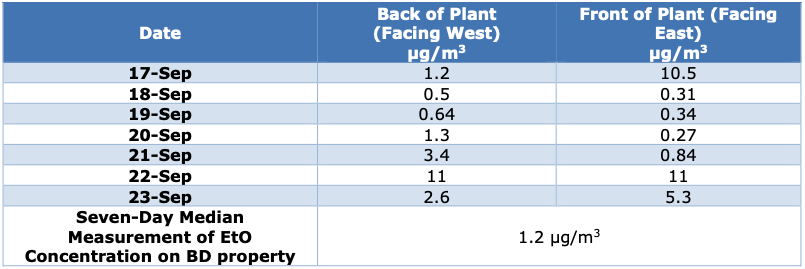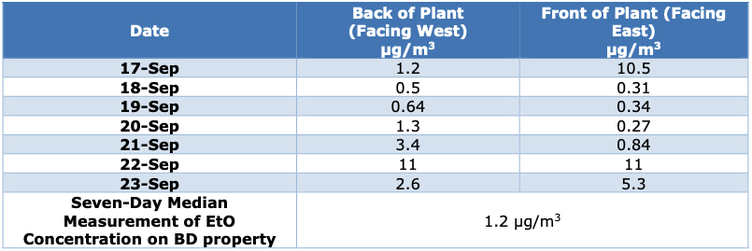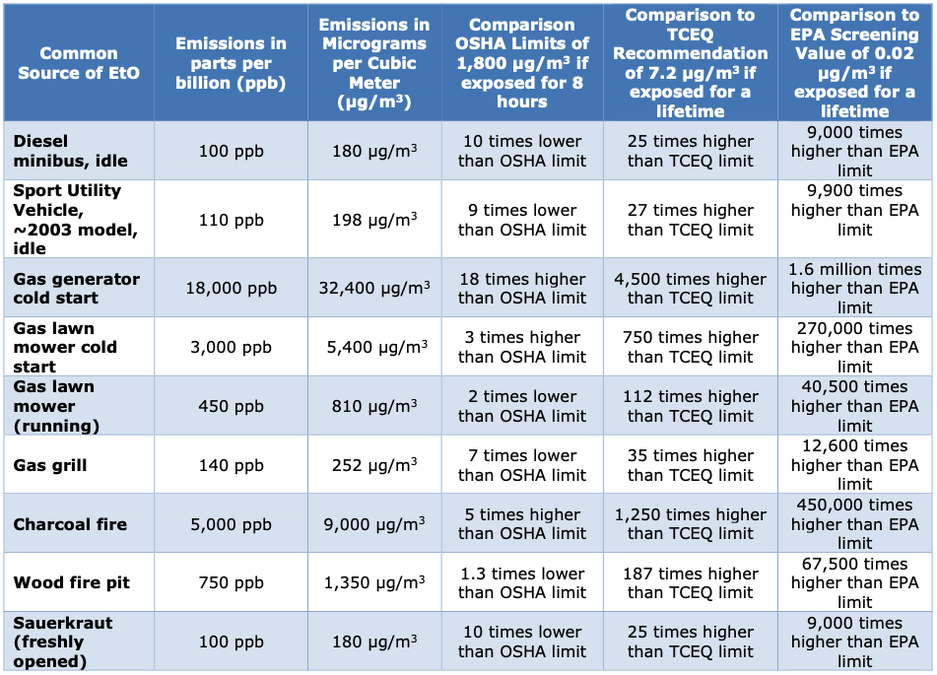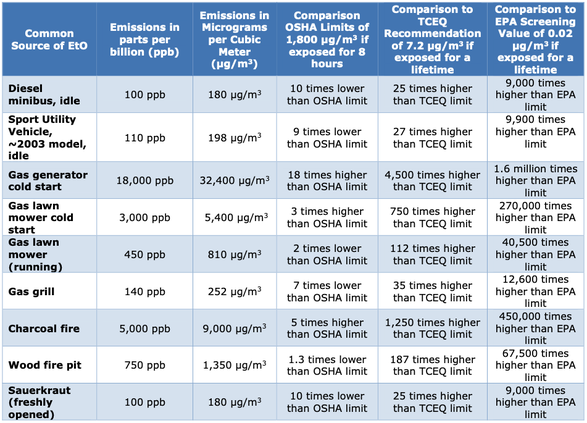COVINGTON, Ga. - During the period of Sept. 17 through Sept. 24, Ramboll - a leading environmental engineering, design and consultancy company - conducted air monitoring sampling on behalf of BD in two locations on company property at the exact same time and location of samples taken by the City of Covington.
The intent was to provide duplicate samples for comparison purposes to samples taken by the City of Covington.
Sampling results are snapshots in time. No one result can be taken as representative of long-term exposures, nor can short-term sampling provide enough data to determine lifetime risks.
This is why air dispersion modeling is often used to estimate longer-term exposures and risks.
As expected, the results vary widely, which is generally consistent with ethylene oxidemonitoring. EtO in the air can come from many sources, including humans, and measurements are in very small amounts (micrograms of EtO per cubic meter of air), so there can be a high degree of variability among measurements with no clear explanation for it.
Given the variability of the results, with many days seeing only background levels of EtO, BD does not believe the unintended release of EtO that BD voluntarily reported had any significant bearing on these results.
When air monitoring values fluctuate up and down at a single spot, that should be noted, and all measurements should be considered when assessing exposures over time, not just the highest value, since long-term health risk generally depends on consistent long-term exposure.
In most environmental studies, averaging data points of a single location over time using the geometric mean, or median, is a preferred method of analyzing air monitoring data.
The results from samples taken on BD’s property, which show a median concentration of EtO at 1.2 micrograms of EtO per cubic meter of air (μg/m3), is well below permissible exposure limits set by the Occupational Safety and Health Administration (OSHA) and the Texas Commission on Environmental Quality (TCEQ), but is greater than the screening value set by U.S.
EPA, which does not account for background levels of EtO from other sources, including the human body. The U.S. EPA screening level is also below detection levels of current air monitoring technology.
The intent was to provide duplicate samples for comparison purposes to samples taken by the City of Covington.
Sampling results are snapshots in time. No one result can be taken as representative of long-term exposures, nor can short-term sampling provide enough data to determine lifetime risks.
This is why air dispersion modeling is often used to estimate longer-term exposures and risks.
As expected, the results vary widely, which is generally consistent with ethylene oxidemonitoring. EtO in the air can come from many sources, including humans, and measurements are in very small amounts (micrograms of EtO per cubic meter of air), so there can be a high degree of variability among measurements with no clear explanation for it.
Given the variability of the results, with many days seeing only background levels of EtO, BD does not believe the unintended release of EtO that BD voluntarily reported had any significant bearing on these results.
When air monitoring values fluctuate up and down at a single spot, that should be noted, and all measurements should be considered when assessing exposures over time, not just the highest value, since long-term health risk generally depends on consistent long-term exposure.
In most environmental studies, averaging data points of a single location over time using the geometric mean, or median, is a preferred method of analyzing air monitoring data.
The results from samples taken on BD’s property, which show a median concentration of EtO at 1.2 micrograms of EtO per cubic meter of air (μg/m3), is well below permissible exposure limits set by the Occupational Safety and Health Administration (OSHA) and the Texas Commission on Environmental Quality (TCEQ), but is greater than the screening value set by U.S.
EPA, which does not account for background levels of EtO from other sources, including the human body. The U.S. EPA screening level is also below detection levels of current air monitoring technology.


According to four prominent toxicology experts the company engaged to provide third-party insights and analysis, the results do not indicate short- or long-term health risks. These consultants also collectively caution that a week of sampling is a snapshot in time and could be misleading either positively or negatively.
Robert DeMott, Ph.D., DABT
“The levels of EtO around the plant when you look at them in their entirety are not that different from background levels overall for the greater Atlanta area, and given the distance to residences, we wouldn’t expect to see levels above background when you get farther from the BD plant," he said. "As a byproduct of both combustion, from fuel to firewood and metabolism, from humans to bacteria, low levels of ethylene oxide are around us in the environment every day so it is always relevant to consider how much individual sources really change exposures.”
DeMott has completed and directed risk analyses of chemical components of toys, electronic devices, apparel, shipping materials and building materials. He has also directed evaluations under California Proposition 65 and the U.S. federal pesticide regulations regarding labeling requirements and hazard notifications.
Michael Dourson, Ph.D.
Michael Dourson, Ph.D., a board-certified toxicologist and scientific director of the not-for-profit Toxicology Excellence for Risk Assessment, said there is no concern for cancer risk for employees or the community based on these results.“OSHA dictates the allowable amount of EtO exposure for workers on an 8-hour shift, which is set at 1,800 μg/m3, so the median concentration is 1,500 times lower than OSHA requirements for this facility," he said. "In addition, as you get farther from the facility, any level of EtO from the facility would be expected to drop significantly, meaning the community exposure is even lower and well within the safe zone.”
Prior to TERA Dourson was senior adviser in the Office of the Administrator at the U.S. EPA and has served as a professor in the Risk Science Center at the University of Cincinnati, College of Medicine. He was awarded the Arnold J. Lehman award from the Society of Toxicology, the International Achievement Award by the International Society of Regulatory Toxicology and Pharmacology, and four bronze medals from the U.S. EPA.
He has been elected as a Fellow of the Academy of Toxicological Sciences and as a Fellow for the Society for Risk Analysis.
Dr. Jonathan Borak
Dr. Jonathan Borak, M.D., clinical professor of medicine at Yale School of Medicine noted that the measured concentrations of EtO on BD’s property are well below safety guidelines set by OSHA and by TCEQ, which recently proposed a level of 4 parts per billion or 7.2 μg/m3.“The results were higher than U.S. EPA’s screening assessment value, which uses a 0.02 μg/m3 measurement, but that is a screening level, not a health-based level," he said. "U.S. EPA’s screening level does not account for background levels of EtO made by other sources, including the human body, so it is helpful to compare risks, but not predict risks. These data do not indicate a meaningful cancer risk for the surrounding Covington community.”
Borak is board certified in Internal Medicine, Occupational Medicine and Toxicology and is a Fellow of the American College of Physicians, the American College of Occupational and Environmental Medicine, the Royal College of Physicians of Canada, the American Industrial Hygiene Association and the Academy of Toxicological Sciences.
Gail Charnley, Ph.D.
Gail Charnley, Ph.D., principal at HealthRisk Strategies said the results were consistent with data that she has seen elsewhere.“I believe these results show that the BD facility is operating well within safe levels of EtO emissions," she said. "Based on studies conducted on workers who were exposed to much higher levels over long periods of time and still showed no elevated cancer incidence, the concentrations of EtO measured on BD property are thousands of times lower than what would be required to create a health risk to employees and the community.”
From 1994 to 1997, Charnley was executive director of the Presidential/Congressional Commission on Risk Assessment and Risk Management during the Administration of President Bill Clinton and has also served as director of the Toxicology and Risk Assessment Program at the National Academy of Sciences/National Research Council. She is a lifetime fellow and a past president of the international Society for Risk Analysis.
As previously disclosed, a third-party emissions testing firm has determined that the emissions abatement technology used at BD’s Covington facility destroys 99.999% of ethylene oxide routed to the abatement system during the medical product sterilization process. This destruction rate efficiency is significantly better than the 99.97% reported during the last required stack test in 2012.
Using the updated 99.999% destruction efficiency, BD estimates 2019 emissions from the stack will be approximately three to five pounds for the full year.
In addition to these air monitoring results, the Advanced Medical Technology Association, commissioned a study conducted by Montrose Air Quality Services to measure EtO emissions from common sources of EtO. The study found that common sources of EtO emit comparatively high amounts of EtO (see table below for selection from Montrose report to AdvaMed). Montrose is the same firm that conducted air monitoring for the City of Covington.


The report is valuable to provide context of other sources of EtO and their point source emissions levels, as well as showing how comparisons to “safe” levels set by a variety of regulatory bodies using one point in time can be highly misleading.





